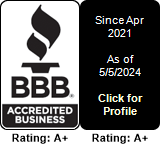If you’re an Atlanta business fighting for search visibility, you’re already aware that SEO isn’t about quick hacks anymore. But here’s what most still miss: it’s not even about winning. It’s about defending. The real race in Atlanta SEO is to build an architecture that resists, endures, and outlasts volatility. What you need is not another “tactic.” You need a moat.
This guide breaks down the anatomy of SEO moats – what they are, how they work, and how to build one that safeguards your Atlanta search visibility regardless of algorithm shifts, AI-generated content floods, or increased local competition.
What Is an SEO Moat?
A moat in business refers to any defensible advantage that keeps competitors from eroding your market share. In SEO, a moat is not about a temporary ranking. It’s about systemically fortifying your presence so your site becomes increasingly difficult to displace.
In Atlanta, where law firms, HVAC providers, and service businesses aggressively compete ZIP code by ZIP code, your moat must go beyond content volume or backlinks. It needs to be technical, behavioral, semantic, and local.
Four Types of SEO Moats You Can Build in Atlanta
1. Technical Moat
- Fast, mobile-first architecture (Core Web Vitals optimized)
- Bulletproof internal linking
- Canonical logic and indexation controls
- Crawl budget optimization aligned with ZIP coverage
A technical moat ensures Google can fully crawl, understand, and serve your site, especially in mobile-heavy zones like South ATL. In particular, sites that target areas like 30315 or 30310 must prioritize crawl efficiency, as these regions often show mobile-first indexing issues. Using a Moat Health Scorecard, we detect crawl loops, 404 patterns, and canonical cannibalization that silently erode rankings.
2. Semantic Moat
- Content clusters built around Atlanta user intent
- Schema markup for service, location, FAQ, person, and legal entity
- Zero-fluff, high-density topical depth
For example, a personal injury firm targeting “injury attorney Midtown” must publish supporting articles on “spinal trauma recovery after a crash,” “pain and suffering claim timelines,” and “common causes of accidents in 30308.” Without these semantic reinforcements, core commercial pages lack topical authority. Rich schema types like LocalBusiness, LegalService, and FAQPage should be deployed alongside ZIP-specific content to trigger Google’s contextual graph for Atlanta.
3. Behavioral Moat
- Scroll depth optimization and heatmap-informed CTA positioning
- Mobile-first interface design tailored to Atlanta’s user flow
- Copywriting structured to reduce pogo-sticking and abandonment
- Engagement metrics mapped by neighborhood (e.g., higher bounce in Buckhead, longer dwell in Decatur)
Atlanta audiences behave differently by ZIP and device. A CTA below the fold might fail in East Point but work well in Midtown. Behavior-informed design, reinforced with video content and JSON-LD transcript schema, increases both rankings and conversion rates.
4. Trust Moat
- GMB review velocity aligned with review intent (informational vs. transactional)
- Off-page citations from local institutions like the Atlanta Business Chronicle or the Georgia Bar
- Use of Person and Organization schema to display attorney credentials or founder profiles
- Directory link placement in hyperlocal platforms like Nextdoor East Atlanta, Decatur Business Council, or Sandy Springs Legal Network
Google’s local results operate through a trust filter. Proximity isn’t enough. Verified external signals must align with on-page trust architecture. Firms that respond to 90 percent or more of reviews and maintain GMB Q and A freshness gain advantage in ZIPs like 30328 where review competition is dense.
Common Blind Spots That Erode Atlanta SEO
- One-page “location” content that lacks structured data, schema, or media assets
- Unclaimed or stagnant GMB profiles, especially for satellite offices
- Overuse of generic or spun AI content that fails to reflect neighborhood phrasing or user behavior
- Lack of competitive ZIP mapping, especially in hotspots like 30303 (Downtown) or 30305 (Buckhead)
How to Begin Building Your Moat
Phase 1: Audit for Fragility
- Identify crawl and indexability blockers
- Benchmark mobile performance by ZIP (e.g., test Decatur vs. Sandy Springs)
- Review schema integrity across commercial intent pages
- Evaluate Moat Health Scorecard for trust signal gaps and crawl leaks
Phase 2: Structure by Intent
- Cluster content semantically around user journey stages
- Deploy ZIP-aware templated frameworks for each service area
- Differentiate content for Midtown, Buckhead, and Decatur audiences
- Ensure unique page titles, local media embeds, and internal link bridges
Phase 3: Publish with Precision
- Apply appropriate schema: LocalBusiness, LegalService, Product, and FAQPage
- Structure internal linking from blog to ZIP to service to topic
- Base copy on conversion data, call logs, and search term intent patterns
Phase 4: Defend via Behavior
- Use heatmap tools to reposition CTAs by scroll behavior
- Incorporate structured video content and update freshness timestamps
- Monitor bounce rate and time-on-page by ZIP and device
Real-World Results: Building Moats That Rank and Defend
Midtown-Based Psychologist
A solo therapist ranked on page 7 for “trauma therapist Midtown Atlanta.” We implemented topical clustering (e.g., CBT for professionals), ZIP-localized content, and schema for psychology credentials.
After 3 months: Top 3 positions across 6 mental health terms in Midtown and Buckhead; 170 percent increase in organic bookings.
Atlanta Security Alarm Company
Their old site was thin, slow, and relied on ads. We built a technical moat with Core Web Vitals upgrades, segmented location pages, and aggressive GMB optimization.
After 6 months: Ranked above national vendors for “commercial alarm systems Atlanta,” with a 220 percent boost in organic form submissions.
Personal Injury Law Firm
Began outside the top 10 under Yelp and FindLaw. We created semantically linked clusters, deployed advanced schema, and increased trust signals through review campaigns.
After 4 months: Map Pack and organic Top 3 across 20 plus high-value queries in 30309 and 30308. Sixty-eight thousand dollars attributed to SEO leads.
Additional Moat Opportunities for 2025 and Beyond
- SERP feature defense through ATL-specific FAQ blocks, snippets, and video schema
- Voice search readiness with queries like “who installs AC in College Park open Sunday”
- Content signature with timestamped case examples and client quotes
- Use of first-party CRM and transcript insights to shape local content
- Hyperlocalized dynamic pages built for every ZIP in Fulton and DeKalb Counties
Frequently Asked Questions
1. What is the core idea behind a moat?
It is the strategic defense layer that prevents rankings from slipping due to competitors, algorithm changes, or diluted relevance.
2. Why doesn’t traditional SEO last in Atlanta?
High density and smart competition mean surface-level tactics fail. Moats focus on depth, trust, and structure.
3. Do all moats work equally well in every ZIP?
No. Each area has behavioral and competitive differences. Buckhead requires trust velocity, while Decatur needs semantic depth.
4. Can a site recover if it’s already penalized?
Yes. A structured moat rebuild, starting with crawl, schema, and trust, can reset and restore rankings.
5. Are content clusters better than long pages?
In Atlanta, yes. Clusters that speak to ZIP and service outperform broad articles without local signals.
6. Is schema optional?
Not in Atlanta. Legal, service, and review schema are necessary to trigger rich results and avoid being buried by national players.
7. What’s the role of behavior metrics in SEO?
Atlanta’s rankings often correlate with CTR, scroll depth, dwell time, and review responses. They must be tracked ZIP by ZIP.
8. Do you need video?
Yes, especially in mobile-heavy areas like South Atlanta. Video drives behavioral signals and allows you to own video packs and snippets.
9. How long does moat effect last?
Once built, a healthy moat protects rankings through most core updates, assuming GMB and content freshness are maintained.
10. What’s the most overlooked moat tactic in Atlanta?
Using structured GMB Q and A combined with schema to generate PAA (People Also Ask) answers for hyperlocal queries.
Glossary: Strategic Terms Defined (Atlanta-Focused)
Moat Health Scorecard
An internal diagnostic framework to assess technical, trust, and semantic coverage across ZIP-focused service pages.
Semantic Clusters
Structured topical groupings like “rideshare accident Midtown,” “Grady ER wait times,” and “insurance settlement delays in 30309.”
Crawl Budget
The bandwidth Google allocates for indexing a site. Optimized via canonical clarity, log file audits, and mobile-first structure.
Trust Signals
Signals such as verified business ownership, response rates, and review velocity that indicate reputational strength in SERPs.
AI-Spin Risk
The dilution of topical authority by publishing low-effort, repetitive, or templated AI content lacking Atlanta nuance.
E-E-A-T
Google’s evaluation criteria: Experience, Expertise, Authority, and Trust — all of which should map to local context.
Map Pack Visibility
Inclusion in the 3-pack of local business results, influenced by proximity, trust metrics, and local keyword density.
Blind Spots
Overlooked weaknesses like non-localized schema, poor internal linking, and duplicate content in ZIP-rich neighborhoods.


